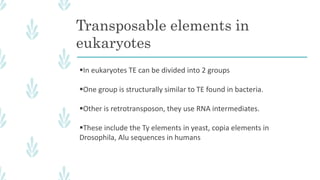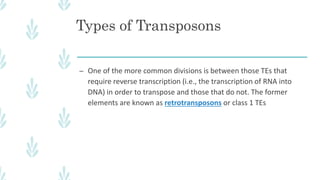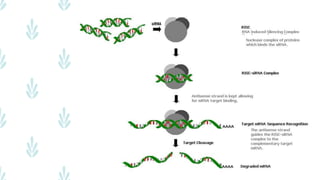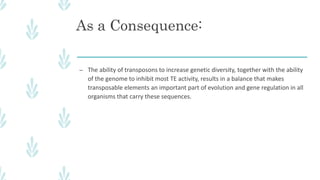Transposable elements, also known as jumping genes, are DNA sequences that can move within genomes. They were first discovered in the 1940s and are common across eukaryotes. Transposable elements are divided into two classes - retrotransposons, which move via an RNA intermediate, and DNA transposons, which move via a cut-and-paste mechanism. While transposable element movement can cause mutations, they also contribute to genetic diversity and evolution through processes like exon shuffling. Eukaryotes have developed epigenetic mechanisms like DNA methylation and small interfering RNAs to regulate and silence transposable elements in genomes.

























